
Pfc. Thomas Conlon, 21st Inf. Regt., lies on a stretcher at a medical aid station, after being wonunded while crossing the Naktong River in Korea. September 19, 1950. (Photo by Cpl. Dennis P. Buckley)

Men of the 1st Marine Division capture Chinese Communists during fighting on the central Korean front. Hoengsong, March 2, 1951. (Photo by Pfc. C. T. Wehner, Marine Corps)
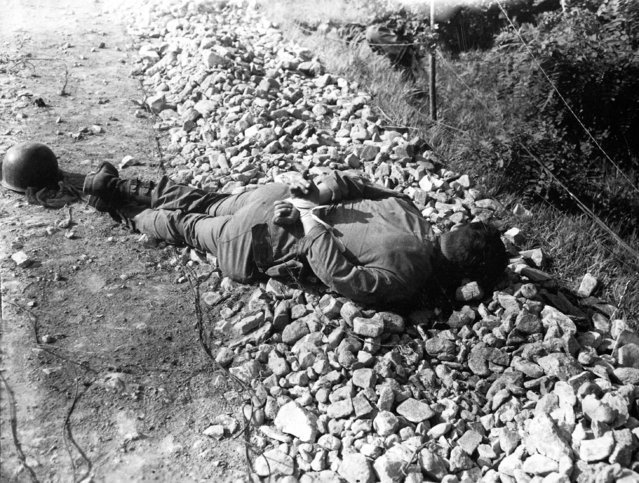
The body of one of several U.S. soldiers who were executed after being captured by North Korean troops just south of Seoul in early July 1950. (Photo by AP Photo)

A U.S. Marine tank follows a line of prisoners of war down a village street. September 26, 1950. (Photo by S. Sgt. John Babyak, Jr., Marine Corps)

The first contingent of Ethiopian troops are shown shortly after their arrival in Korea on May 9, 1951 where they will serve with United Nations Force. (Photo by AP Photo)

A small South Korean child sits alone in the street, after elements of the 1st Marine Div. and South Korean Marines invaded the city of Inchon, in an offensive launched against the North Korean forces in that area. September 16, 1950. (Photo by Pfc. Ronald L. Hancock)

Bodies of some 400 Korean civilians lie in and around trenches in Taejon's prison yard during the Korean War, Sept. 28, 1950. The victims were bound and slain by retreating Communist forces before the 24th U.S. Division troops recaptured the city Sept. 28. Witnesses said that the prisoners were forced to dig their own trench graves before the slaughter. Looking on, at left, is Gordon Gammack, war correspondent of the Des Moines Register and Tribune. (Photo by James Pringle/AP Photo)

A grief stricken American infantryman whose buddy has been killed in action is comforted by another soldier. In the background a corpsman methodically fills out casualty tags, Haktong-ni area, Korea. August 28, 1950. (Photo by Sfc. Al Chang)
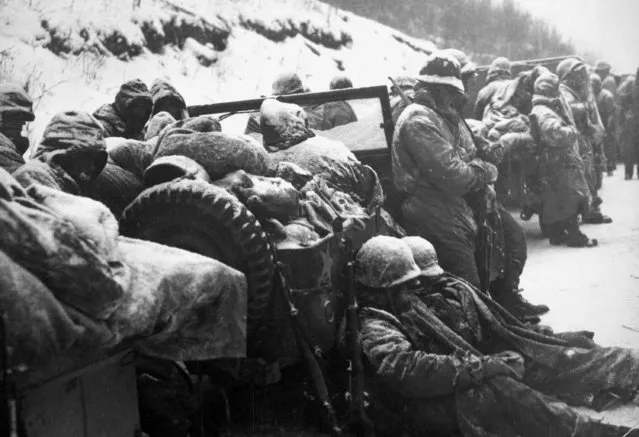
Astonished Marines of the 5th and 7th Regiments, who hurled back a surprise onslaught by three Chinese communist divisions, hear that they are to withdraw! Ca. December 1950; Exact Date Shot Unknown. (Photo by Sgt. Frank C. Kerr, Marine Corps)

Invasion of Ichon, Korea. Four LST's unload men and equipment on beach. Three of the LST's shown are LST-611, LST-745, and LST-715. September 15, 1950. (Photo by C.K. Rose, Navy)

American soldiers push inland from Inchon during the Korean War, 1950. (Photo by Bert Hardy/Getty Images)
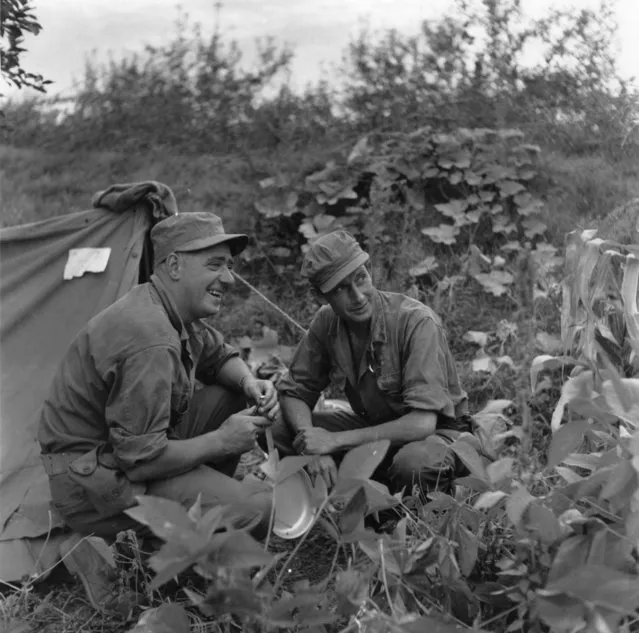
Picture Post photographer Bert Hardy, with journalist James Cameron, covering front line troop movements during the Korean War, 1950. (Photo by Bert Hardy/Getty Images)

A South Korean mother and her child sleeping on the floor of a schoolroom in Taejon. 1950. (Photo by Haywood Magee/Getty Images)

Suspected South Korean traitors on their way to be executed, 1950. (Photo by Haywood Magee/Picture Post/Getty Images)

An American officer inspects a British cooking area near the front lines of battle, 22nd December 1950. (Photo by Keystone/Getty Images)
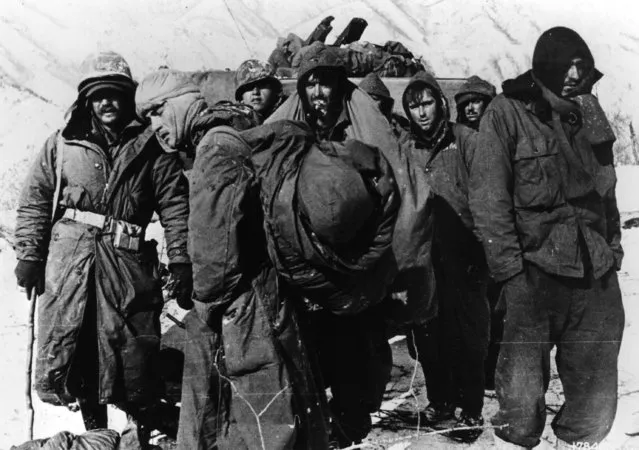
Frostbitten soldiers of the US 1st Marine Division and 7th Infantry Division during the Korean War, 1952. (Photo by Keystone/Getty Images)

A South Korean soldier kicks his way into a building in Inchon, in his search for Communists who have gone into hiding since the American invasion of the Korean port, October 1950. (Photo by Bert Hardy/Picture Post/Getty Images)

The wreckage of a bridge and North Korean Communist tank south of Suwon, Korea. The tank was caught on a bridge and put out of action by the Air Force. October 7, 1950. (Photo by Marks, Army)

Two North Korean boys, serving in the North Korean Army, taken prisoner in the Sindang-dong area by elements of the 389th Inf. Regt., are interrogated by a U.S. soldier shortly after their capture. September 18, 1950. (Photo by Pfc. Francis Mullin)

In late 1950, the formidable Soviet MiG-15 fighter jets (pictured here in a 1963 file photo) appeared in the skies above North Korea. Many of the jets were flown by ace Soviet pilots who reportedly dressed in Chinese uniforms. The Kremlin consistently denied that Soviet pilots were involved in aerial combat above Korea, even as U.S. pilots heard them swearing in Russian over the radio during dogfights. (Photo by Valentin Sobolev/TASS)
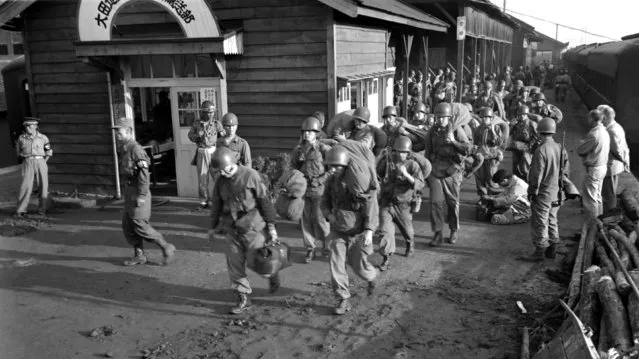
The first units of U.S. Army ground forces to arrive debark from trains somewhere in South Korea, 1950. (Photo by Sgt. Turnbull)

Men and equipment being parachuted to earth in an operation conducted by United Nations airborne units. Ca. 1951. (Photo by Defense Dept. (USIA))

United Nations troops fighting in the streets of Seoul, Korea. September 20, 1950. (Photo by Lt. Robert L. Strickland and Cpl. John Romanowski)

U.S. Marines move forward after effective close-air support flushes out the enemy from their hillside entrenchments. Billows of smoke rise skyward from the target area. Hagaru-ri. December 26, 1950. (Photo by Cpl. McDonald, Marine Corps)
21 Jun 2020 00:03:00,
post received
0 comments
